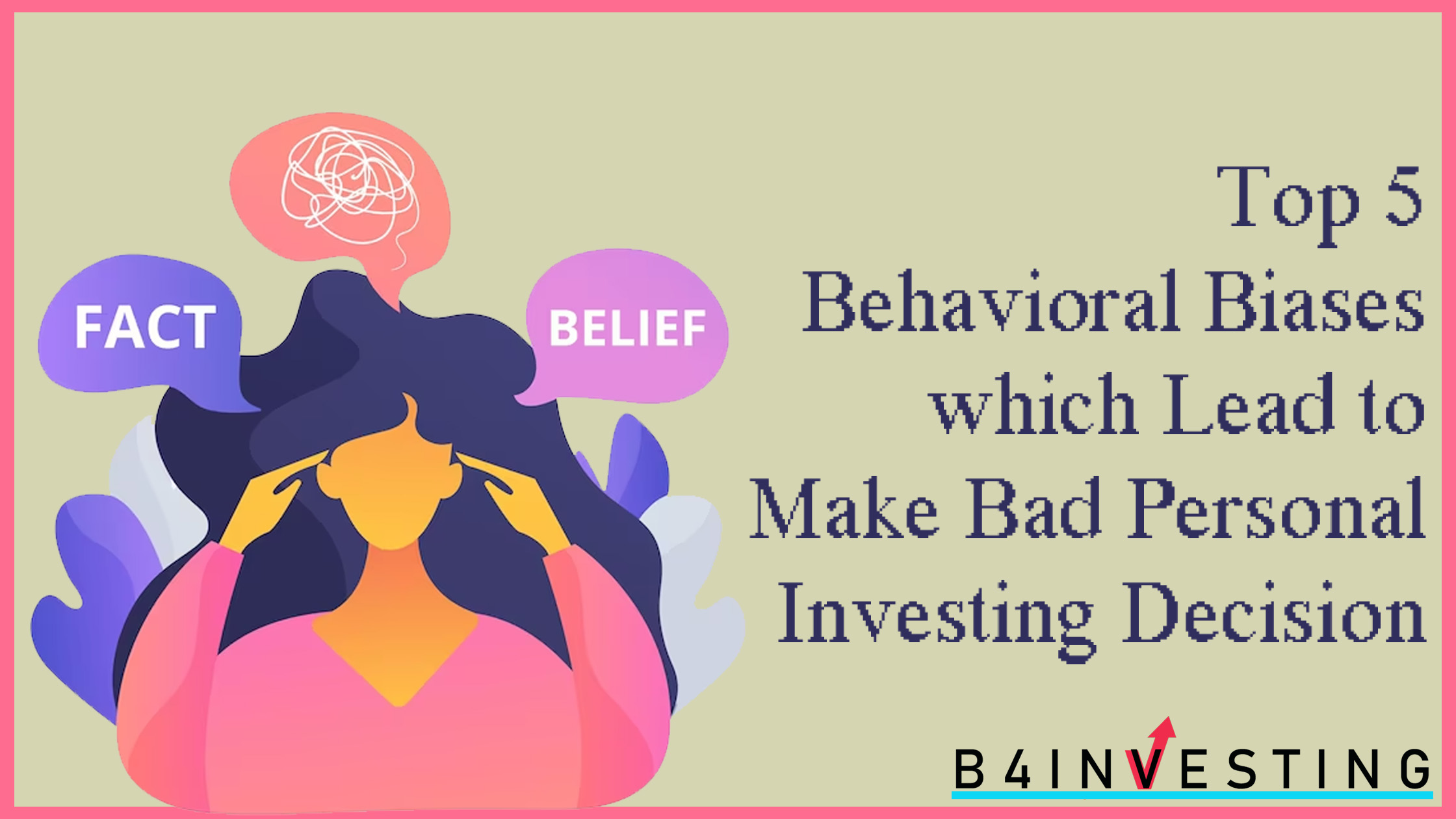
Top 5 Behavioral Biases which Lead to Make Bad Personal Investing Decision
Making decision to invest our hardly earned money to achieve growth is not easy. Right decision has to be made to enter into or exit from any investment instrument at correct time. But the market is complex and it keeps changing. Uncertainty of the market confuse investor to make decision. Regardless of investors being disciplined, wealthy of knowledge, sometimes their decisions might become influenced by behavioral biases. These behavioral biases tend investors to make wrong decisions of investment and loose their money. Lets read some common behavioral biases which all investors have to avoid.
1 Overconfidence Bias
Overconfidence bias is one of the common behavioral biases in investing. It is necessary to be confident before taking investment decisions. Research gives you that confidence but overconfident investors overestimate their ability to predict the future and evaluate investment opportunities which question their quality of information. And when you are overconfident, you might trade more frequently. If predictions go wrong frequently then investors might have to face big losses. Overconfident investors might fail to diversify properly or take on more risk than they can handle. To avoid this bias, investors should diversify their portfolio. Mutual fund is also a good option as investment decisions are taken by expertise(fund manager) and mutual fund also diversify your investment in various sectors, stocks which reduces risk.
2 Confirmation Bias
Confirmation bias occurs when investors seek information to confirm their pre-existing beliefs and ignore information which contradict these beliefs. This can lead to a failure to evaluate potential risks and challenges associated with an investment which results in poor decision-making. To avoid confirmation bias, the perspective of investors should be diverse and evaluate investment opportunities based on various factors, including fundamental analysis, market trends, and risk tolerance.
Read more: How to Conduct a Financial Check-up?
3 Loss Aversion Bias
Loss aversion refers to the tendency to feel the pain of losses more strongly than the pleasure of gains. Loss averse investors might keep loss making investment for long period, hoping to recover their losses, even when it’s clear that the investment is unlikely to turn around. This can prevent them from cutting their losses and reallocating their capital to more promising opportunities. The investment goals should be long term. Investors should not make impulsive decisions with short term market fluctuations.
4 Herding Behavior Bias
Many people feel more comfortable following the crowd. They assume that if everyone else is investing somewhere then that must be a right decision without research and understanding fundamentals.
“Investing isn’t about beating others at their game. It’s about controlling yourself at your own game.”
–Jason Zweig
With herd behavior investors can miss the good investment opportunities and can face market crash resulting in poor investment decisions. To avoid herd behavior, people should take diverse range of opinion. New investors should seek information from market experts before taking any decision.
5 Anchoring Bias
Anchoring bias means depending too heavily on the single piece of information encountered when making decisions. Investor may become anchored to historical record of particular low performing stock and start believing that it will perform the same as in history without the availability of evidence to support it. Anchoring can lead to missed opportunities and prevent investors from adjusting their strategies in response to latest developing circumstances. To avoid anchoring bias, investors should evaluate investment opportunities based on various factors like fundamental analysis, market trends, and risk tolerance.
Read more: What is Strategic Stock Investment Planning? Online Ways to do it
Takeaway:
We read few behavior biases which investors go through sometime in their lives. To avoid these pitfalls, one should follow trading rules. For example, if your are investing in stock market, decide rules when too book loss(sell stock when it goes down by certain percentage) and when to buy a stock(before the value of stock rises by some percentage). You cant completely avoid these biases but minimize its effects by trading rules, diversifying your investment, taking experts opinion, think of mutual fund option if you are confused where to park money, etc.

